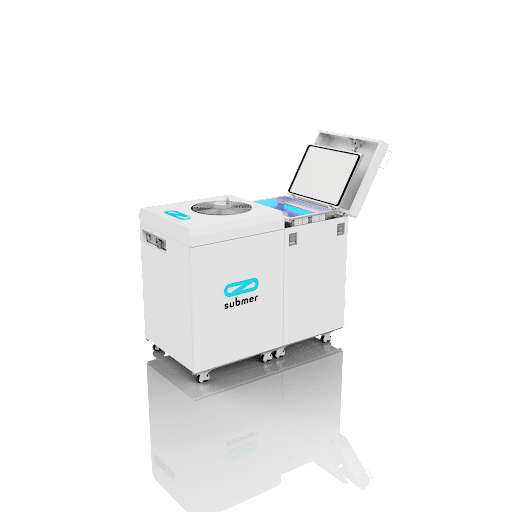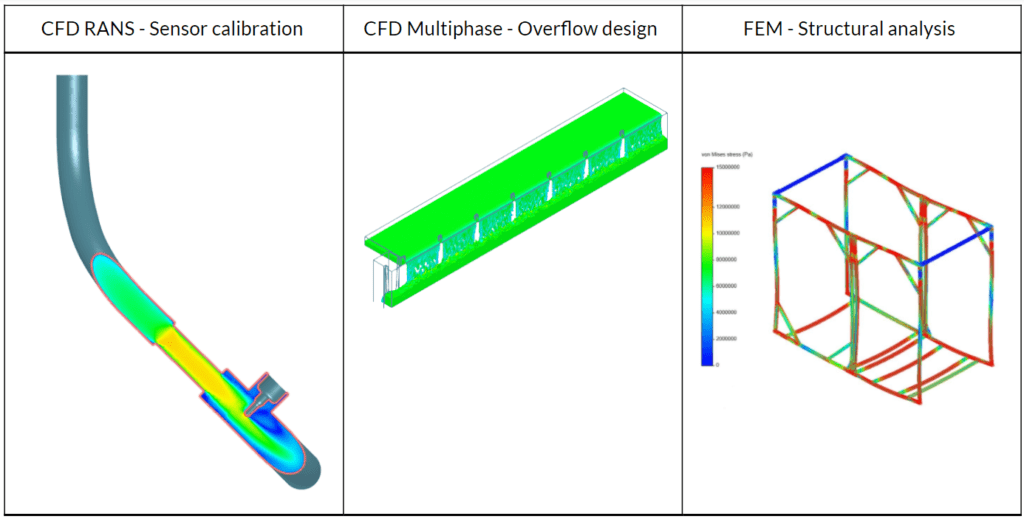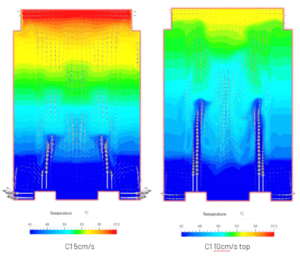Submer Technologies, S.L. (Submer) is a specialist product and services provider that focuses on the data center market and IT industry. Cooling data center buildings is critical, as they consume large amounts of energy and are considered a carbon-intensive industry. This is set to continue as the global trends of digitalization and cloud computing further accelerate. Submer has innovated and led the way in creating energy-efficient, low-carbon, and modular data center solutions that can scale according to need. The product development for these new technologies involved theoretical design validation using calculations, CFD analysis, and in-situ monitoring of products to verify their performance. All three methods are required to enable next-generation cooling of energy-intense environments in a competitive market.
Innovative Technology in Data Center Cooling
Submer has developed a new line of SmartPods of various sizes. Key to these new products is an innovative and proprietary cooling fluid that significantly enhances the cooling performance and hence, overall system efficiency of their data centers. The coolant takes advantage of the better thermal properties that a liquid material has over gases, such as air, for absorbing away excess thermal energy.
The Micropod is one of these new products and is designed to offer up to 7 KW of heat dissipation with integrated secondary cooling sub-systems for optimal efficiency. The unit comes ready for outdoor operations and has a 95% reduction in cooling operating costs when compared to similar-sized competitor products. Its efficient design means that up to 10x more server capacity can be designed per unit floor area with 50% less capital investment. The emphasis on durability has enabled a 30% longer hardware lifespan and 60% fewer maintenance requirements when compared to its market competitors of the same size. Its sustainable credentials mean that the Micropod emits 45% less CO2 and has zero wastewater, making it one of the most environmentally friendly data center products in the world. Designing such a novel product required extensive research and simulation testing to evaluate multiple design and performance options. The thermal, flow and structural aspects of the design all needed simulating to give a high degree of confidence in their behavior before the team committed to physical prototyping.
A critical component in the Micropod is the smart coolant. The fluid used is a hydrocarbon synthetic fluid and dielectric, developed in-house by Submer and tailored for electronics cooling applications with a stable thermal behavior. It has a 15-year lifespan and is non-corrosive, non-toxic, and non-oxidative. There is also no fluid loss over the lifespan, something that is common in other industry coolants. The smart coolant also acts as a barrier to dust and moisture to protect the electronic components, both of which are common reasons for system inefficiency. Being biodegradable the coolant is considered environmentally friendly; its non-flammable properties render it safe for use in high-temperature electronics applications. Due to the material characteristics of the coolant, extensive use of simulation was made to converge on a design solution.
The Role of Simulation in Designing Sustainable Data Centers
Electronics systems in data center applications require extensive testing across several types of engineering. The fluid flow and pressure loss behavior of coolants and air is necessary to understand correctly. Thermal effects to capture the cooling in a complex system are needed to correctly size and design the cooling system components including the coolant fluid itself, pumps, fans and valves, and other fluid control devices. A deeper look at coolant fluid materials means that multi-phase flow modeling might be needed and finally, condensing high power components in a modular design construction requires structural and mechanical simulations to stress test the assembly and evaluate loading to predict structural failure points.
Figure 2 illustrates some examples of the types of simulation that can assist in the design of complex products. CFD RANS simulations were run to calibrate flow sensors in pipes, for example. Similarly, a finite element analysis (FEA) simulation was used to calculate stress and loading on the structure for the Micropods. Figure 3 illustrates the coolant stratification and mixing inside a MicroPod unit.
This type of analysis is used to ensure that the dissipation of heat is an efficient process given the internal assembly and layout of the system. It helps engineers visualize circulation zones that might stifle the heat dissipation and hence cooling effect. Figures 4a and 4b illustrate the scenario analysis that is possible in a parallel and parametric simulation platform like SimScale.
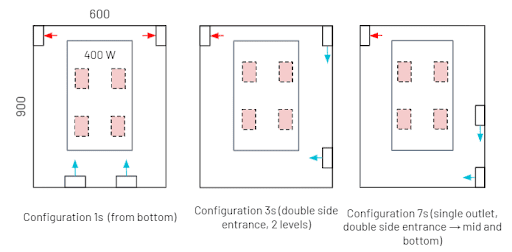
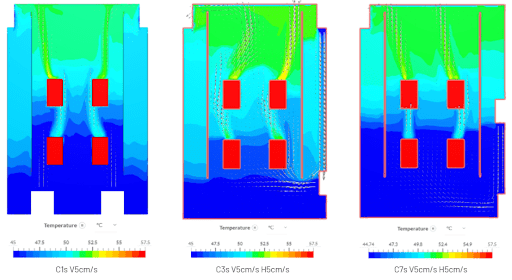
The designers, in this case, have modeled three variations of the inlet/outlet configuration of the fluid tank and CFD shows how the fluid will behave in each case. In reality, designers can simulate dozens and hundreds of variations at the same time, leveraging the high-performance computing and parallel simulation capabilities available.
Cooling Data Centers with Cloud-Native Simulation
Engineering teams leveraging the power of cloud-native simulation, like Submer, have stated the following benefits to their design and development processes:
- No hardware requirements – SimScale is fully in the cloud and accessed via a web-browser
- Complete parallel computing – saves time and cost when exploring the design space and simulating many variations of a design
- Fast and easy to use – with intuitive learning cycles
- All-in-one CFD and FEM package – a wide range of analysis types all in one platform
- Complete post-processing tool – no need for third-party visualization tools
- Technical support and collaboration – live and critically important when meeting deadlines.
Learn more about how organizations leverage simulation to validate their cooling solutions:
- On-Demand Webinar: Smart Data Center Design
- NDC-GARBE Proved The Resilience of Their Data Center Cooling Technology With SimScale
- Cooling High-Power Density Data-Center Hardware: Thermal Design
- Submer Technologies, S.L. Validated Their Electronics Cooling Solutions With CFD
